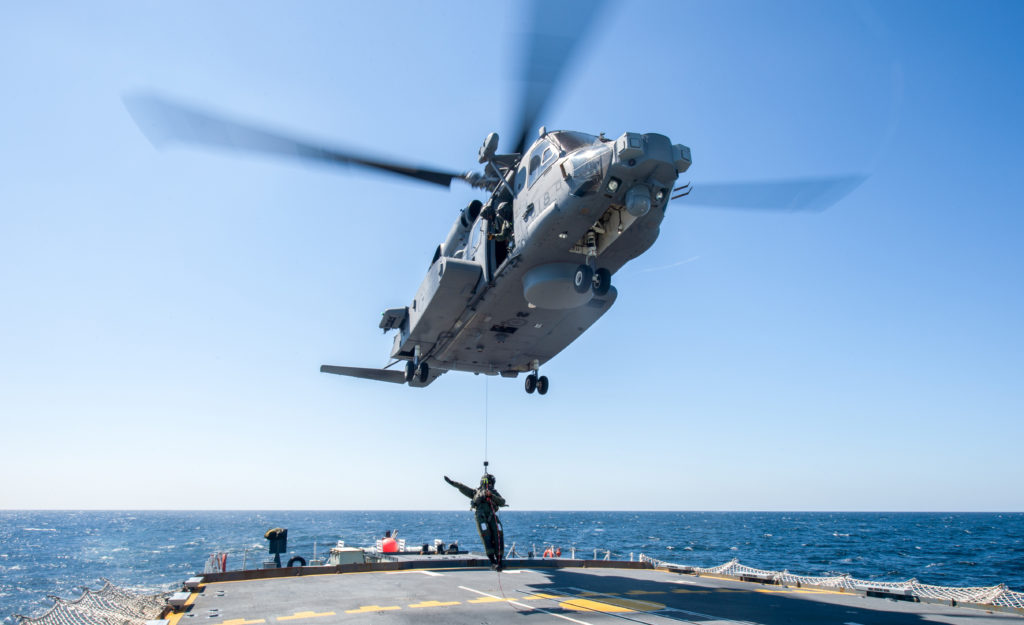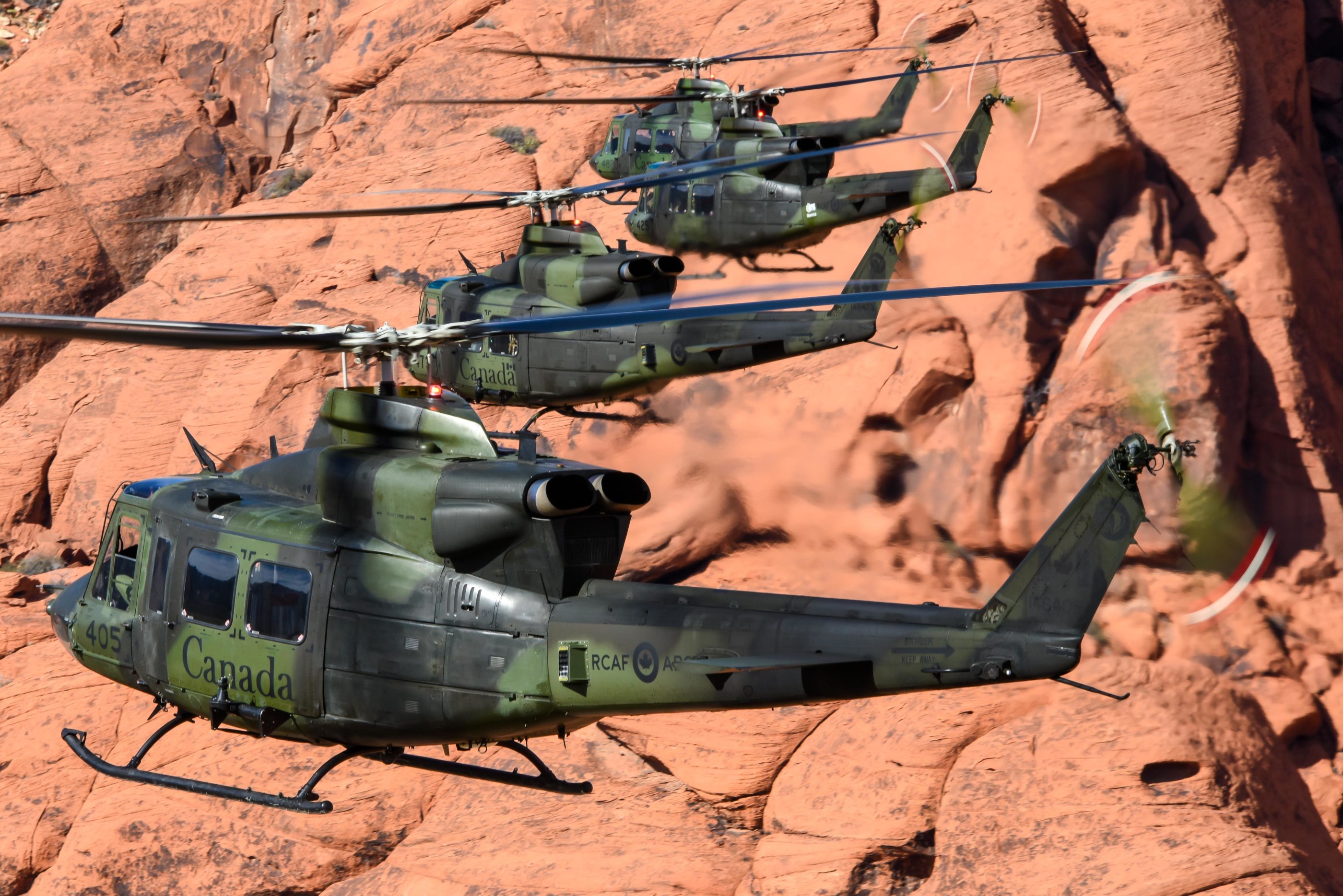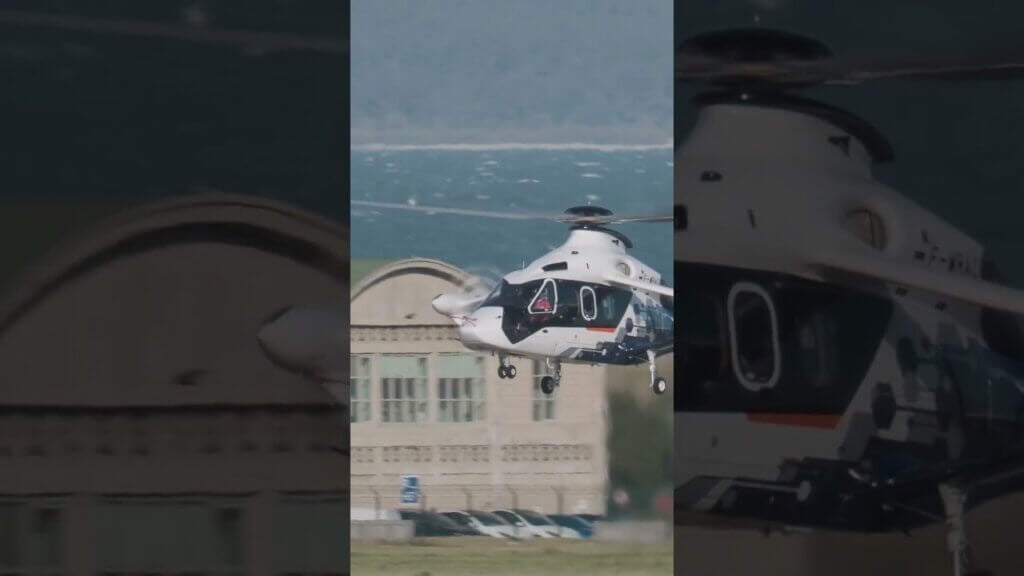New airborne early warning (AEW) aircraft and dedicated funding for tactical helicopters to replace the current multi-role CH-146 Griffons, are among the key aerospace elements of an updated defence policy released on April 8.
They are also part of the government’s stated commitment to increase defence spending to meet NATO’s goal of two per cent of gross domestic product, a target reaffirmed by Canada and its allies at the 2023 NATO Summit in Lithuania. Canada’s spending, which bottomed out at one per cent in 2013, currently hovers around 1.33 per cent.
The government is now aiming to reach 1.76 per cent by the end of the decade.
Riffing on the national anthem, the Our North, Strong and Free policy paper—a two-year exercise made public following a technical background briefing to media—projects $8.1 billion in new defence spending over the next five years.
An official at the briefing said that NATO Secretary General Jens Stoltenberg had responded positively to an “overview” of the plan by Defence Minister Bill Blair.
“I think all NATO allies are going to be happy to see that Canada is making a significant move forward to meeting our . . . commitment.”
The U.S. Ambassador to Canada, David Cohen, said in a statement that the direction of Canada’s plan for enhanced northern defence was particularly welcome. “We are also encouraged by the assurances we have received that there will be additional investments,” he added.
Unveiling the policy at 8 Wing Trenton, Ontario, the Air Force’s main air mobility hub, Prime Minister Justin Trudeau acknowledged that some elements of the new plan have not been costed, but said: “there is more to come over the coming years, as Canada continues to step up in a more uncertain and, quite frankly, more dangerous world.”
Asked during the online technical briefing to elaborate on the prospect of the Royal Canadian Air Force acquiring AEW platforms—a $307 million commitment over 20 years—a senior officer told Skies that it would be a “brand new capability.” He pointed out that the function currently is provided through NORAD and other allies in overseas operations.
“It will allow us to provide for greater surveillance of the approaches to Canada’s air and maritime (domains) and plug some of the gaps that may exist in radar and other infrastructure and . . . allow us to burden-share with our allies,” he said.
As for the CH-146 utility helicopters, the officer said the fleet, “will come to the end of its service life in about 2031, so we need to replace that with a capability that is going to be able to contribute to modern threats and operate in the context that Canada needs it to.”
The RCAF will need “platforms that can go a little bit further in terms of reach, can carry a little bit more, and can execute the tasks that we’d require of it,” he explained. Moreover, “modern technologies allow us to explore other options than simply crewed aircraft.”

In 2022, the Air Force created an office to begin assessing what it calls the next Tactical Aviation Capability Set (nTACS) project, a next-generation fleet with range, speed and maneuverability, starting in the 2030s. The multi-fleet solution could be a combination of crewed and uncrewed capabilities. The government has earmarked $18.4 billion over 20 years for the project.
Also affecting the RCAF, the Royal Canadian Navy’s fleet of Arctic and Offshore Patrol Ships (AOPS), some of which are still under construction, will require upgrades to enable them to handle the CH-148 Cyclone maritime helicopters. With a 29,300-pound maximum take-off weight, the Cyclones cannot yet be operated from the ships, which the officer said can only accommodate light helicopters.
“You can’t embark and conduct operations with a Cyclone,” he said, explaining that the Department of National Defence (DND) will explore options for “securing and traversing mechanisms” as well as “helicopter control and approach, capable radar, and some network infrastructure.”
The updated policy also addressed ongoing issues with the procurement process, which the government conceded “takes too long to deliver the capabilities we need.” The answer, it said, would be “a renewed relationship with Canada’s defence industry and a focus on innovation with trusted partners” to respond to “a faster, more competitive age.”
Noting that “autocracies and disruptive states are challenging the international order that keeps Canada safe and prosperous, propelled by Russia’s flagrant violation of international law and China’s attempts to reshape the international order,” the government committed to building a stronger defence industrial base to support a more resilient, modern and sustainable military. That would include, it said, a significant increase in the production of NATO-standard artillery ammunition,” which has been depleted by donations to Ukraine, “and investing in innovation.”
The commitment was cautiously welcomed by the Canadian Association of Defence and Security Industries (CADSI), which speaks for a sector that employs more than 100,000 Canadians and contributes more than $12.4 billion to the country’s GDP.
“This defence policy update is encouraging and, critically, has funding attached that we hope can be counted on—especially at a time when budget cuts remain underway within DND,” CADSI president Christyn Cianfarani said in a statement. She noted that “many elements” of the planned defence spending would be left to future governments.
Overall, though, she was pleased with the government’s commitment to a new relationship with industry.
“What that means to us is collaboration on both current requirements and road-mapping the future—not just more of the same types of engagements that currently exist,” she said. “It also means mirroring the approach of our allies, who unabashedly preference their domestic firms when it makes sense to do so, which can greatly speed up the acquisition process. If the technology, service, or equipment is Canadian-made, and it’s something that meets the [Canadian Armed Forces] needs, we buy it.”
Procurement reform is “something that has proven elusive,” she observed. “The solution cannot only be increased reliance on foreign-made military equipment and services. NATO’s targets – and its Defence Production Action Plan – are based on the idea that each member nation is responsible for building and sustaining a defence industrial base that can contribute to greater allied capacity and deterrence. We commit to working with the government to implement this plan.”









